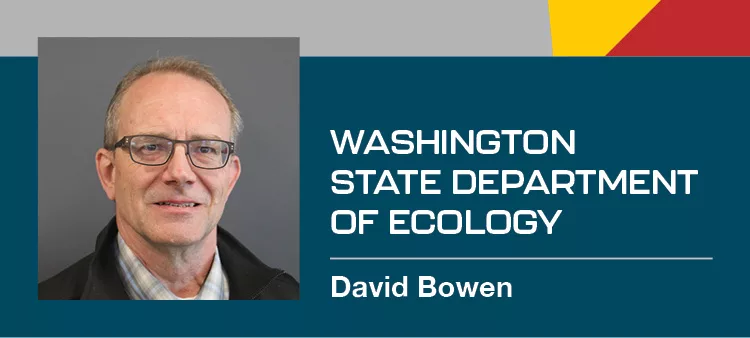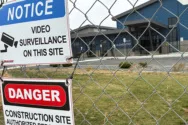
Home » Funding and permitting top Hanford cleanup priorities
Funding and permitting top Hanford cleanup priorities

April 13, 2023
We’ve seen a full year of success, collaboration and progress at the Hanford site.
This year will mark 34 years of cleaning up one of the most contaminated nuclear sites on the planet. Alongside our two Tri-Party Agreement partners – the U.S. Department of Energy (DOE) and U.S. Environmental Protection Agency (EPA) – we’ve made some significant progress.
This type of work isn’t cheap or easy. In fact, a lot of the work being done at Hanford is the first of its kind in the world.
As I reflect on a busy 2022, I’m also looking to the year ahead and the challenges still to tackle.
As one of the regulators obligated to ensure the federal government completes the nuclear cleanup at Hanford, some of the most important work we do comes in the form of permitting.
The permits we issue ensure that cleanup and eventual closure of the Hanford site is protective of human health and the environment.
To that end, our Nuclear Waste Program issued about 45 permits and permit modifications supporting ongoing work at the site. A majority of these permits support the startup over the next year of Direct-Feed Low-Activity Waste (DFLAW), which will get dangerous radioactive and chemical waste out of aging tanks and immobilized in a glass form for permanent disposal.
Our team also made considerable progress on the site’s most important permitting action, the renewal of the Hanford Dangerous Waste Permit, Revision9A. The sitewide permit is one of the state’s most important tools for overseeing DOE’s cleanup at Hanford.
We’re on track to open the draft Rev. 9A renewal for public comment in early 2024. We anticipate a robust public involvement effort from our team to adequately engage and hear from everyone impacted by Hanford.
We spent a lot of time on Hanford’s budget in 2022.
With major operational and capital construction projects on the horizon, an already underfunded cleanup is going to need higher funding appropriations to keep cleanup on track.
Throughout the year, we met and worked with the Washington congressional delegation and the presidential administration on getting Hanford a much-needed raise.
A number of entities including tribes, Washington, Oregon, business interests, nonprofits, labor groups, and more came together throughout the year and wrote letters to President Joe Biden.
These letters emphasized the need for adequate funding now so that we don’t see the overall cost skyrocket by tens of billions, cleanup extend into the next century, and environmental risks continue to mount.
Toward the end of the year, Congress passed a record budget for Hanford in Fiscal Year 2023 – $2.84 billion – an increase of more than $141 million.
This is a major accomplishment worth celebrating, but it’s still nearly a billion less than what’s truly needed.
We plan to take this momentum into budget discussions this year as we keep fighting for the budget needed regardless of the treatment methods applied at Hanford.
In 2022, we saw Covid-19 health restrictions wind down. Many members of the team returned to the office and are working in a hybrid mix of in-person and teleworking, often referred to as the modern work environment.
In-person direct communication is definitely my preference.
Our education and outreach activities returned in full-swing with in-person presentations and events last year that exceeded pre-Covid numbers. In cities across the Pacific Northwest, we were at schools, community colleges, professional association meetings, five service clubs and the Nez Perce STEM Fair this year.
We also continued both attending and hosting virtual outreach opportunities, such as our Let’s Talk About Hanford livestreams, where we present on Hanford topics and take questions from the public.
Our team saw 31 vacancies last year from a mixture of retirements, career changes and various health situations.
As of today, we are just four positions short of our typical staffing level with the ability to get ahead of the work rather than scrambling to catch up.
Our office, just like the broader Hanford workforce, is beginning to see a generation of those working on cleanup beginning to retire. As we look to the next 30 years and beyond of cleanup, it’ll be critical to maintain a diverse, well-trained, innovative workforce that will keep the work on track.
Our team also met our inspection commitments to EPA. These compliance activities are another critical part of the work we do in making sure facilities on site comply with state and federal regulations.
A few other accomplishments across the site included:
- The announcement of an Agreed Order on leaking tanks with DOE, which addresses how to respond to two actively leaking tanks on site in addition to any future single-shell tank leaks.
- DOE completing waste retrieval from three aging single-shell tanks in the AX Tank Farm.
- After 12 years of groundwater remediation in the 100 D/H Area near the Columbia River, we are evaluating completion of groundwater remedy for that area.
Looking forward to 2023, we will continue to support the startup of DFLAW, and are excited to see low-activity tank waste properly treated and disposed of.
We also support the Test Bed Initiative (TBI) and are working with DOE to see Phase 2 of the project through.
TBI Phase 2 involves the retrieval, pre-treatment, grouting, and offsite disposal of 2,000 gallons of Hanford’s tank waste and requires a Research, Development and Demonstration permit from Ecology. We hope the project will demonstrate a valid path to final appropriate disposal of some of Hanford’s tank waste at an out-of-state facility.
On top of these efforts, we have a variety of education and outreach activities in the works, will continue a focused recruiting effort, and look forward to supporting Hanford site cleanup through proactive permitting, conflict resolution, and technical assistance.
David Bowen is manager for the Washington State Department of Ecology’s Nuclear Waste Program.
Hanford
KEYWORDS april 2023





